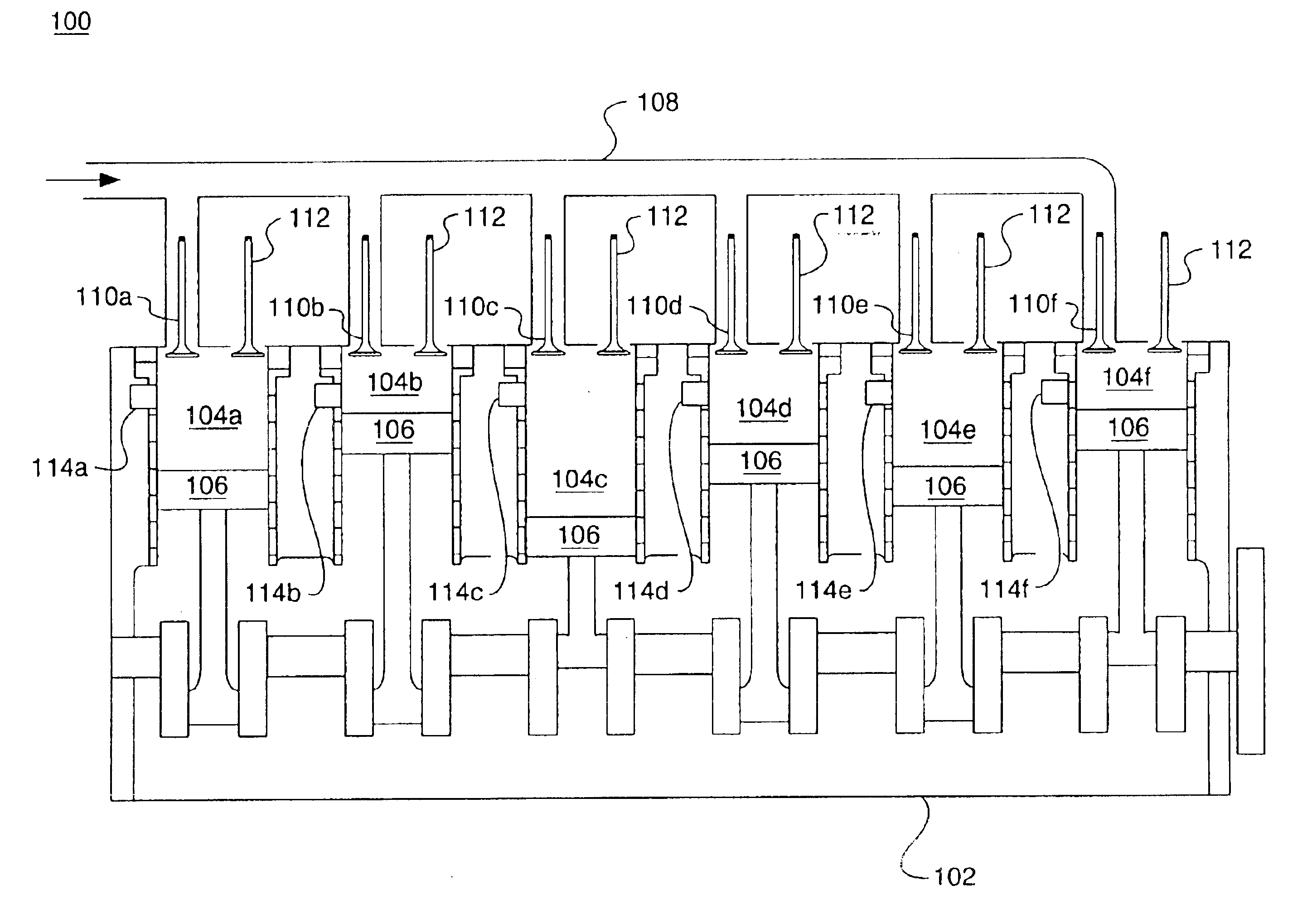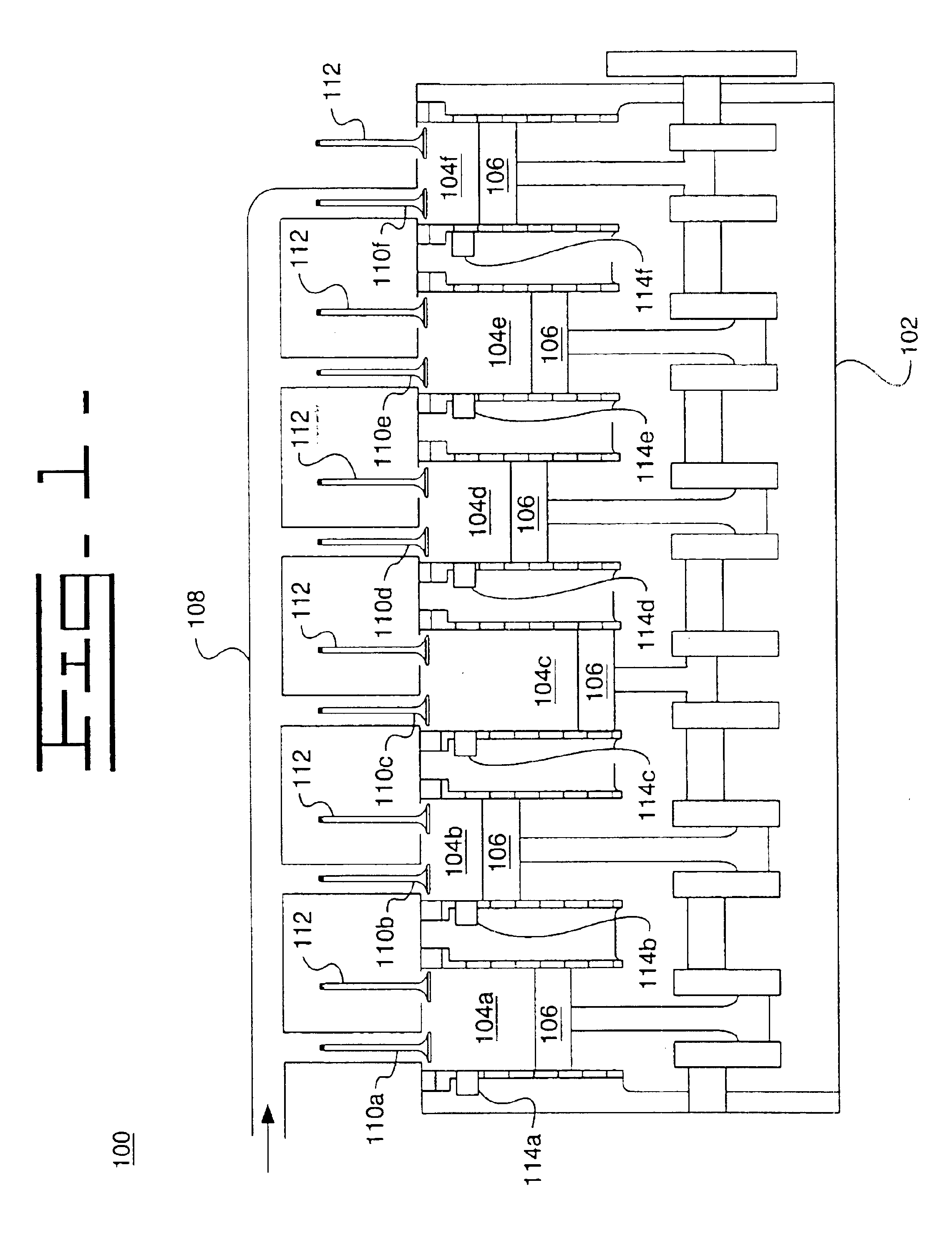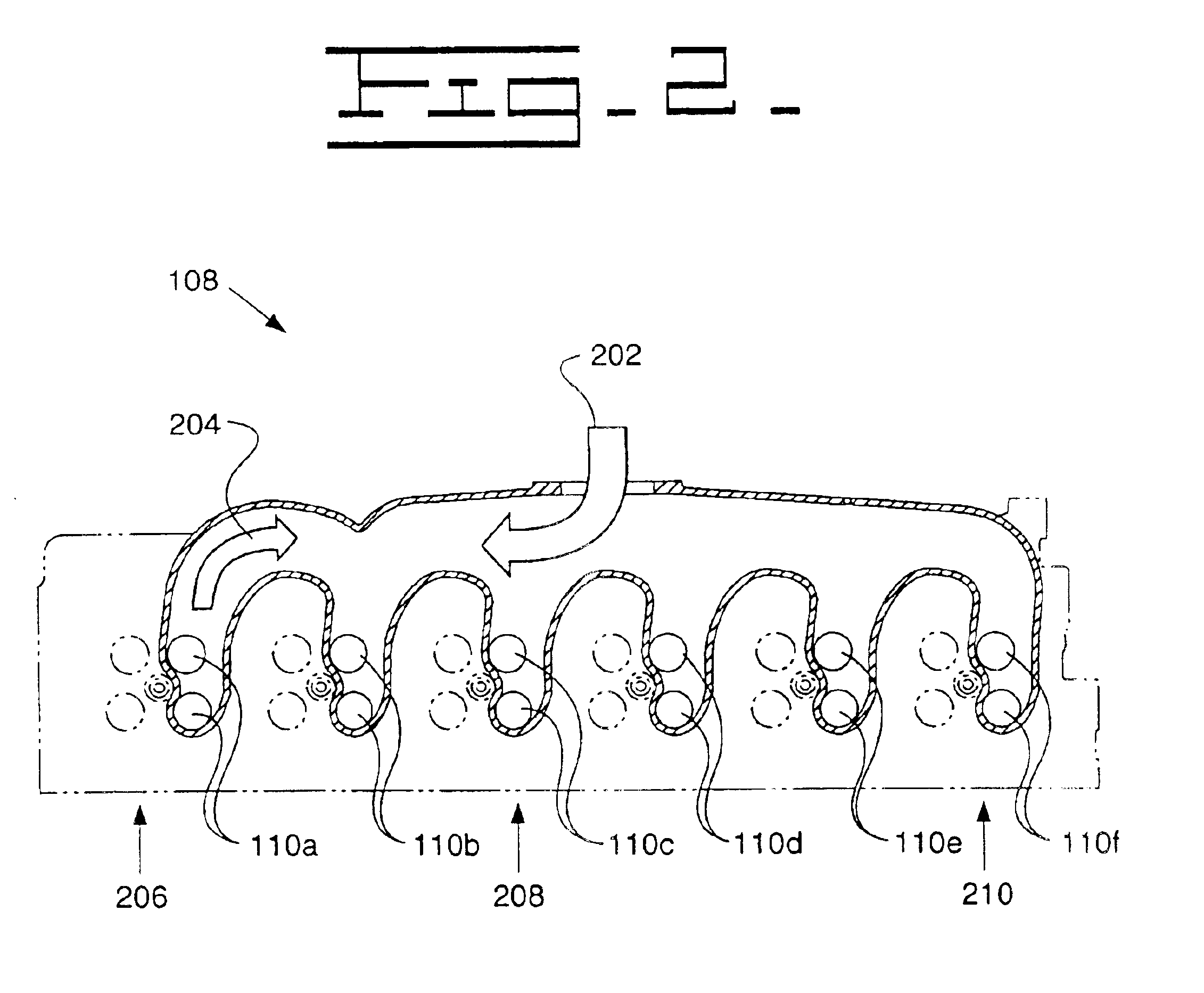Cylinder to cylinder balancing using intake valve actuation
a technology of intake valve and cylinder, which is applied in the direction of electric control, machines/engines, output power, etc., can solve the problems of difficult to achieve the goal, lack of uniform combustion characteristics from cylinder to cylinder, and increased difficulty in achieving the goal
- Summary
- Abstract
- Description
- Claims
- Application Information
AI Technical Summary
Benefits of technology
Problems solved by technology
Method used
Image
Examples
Embodiment Construction
Referring to the drawings, a method and apparatus 100 for adjusting a combustion timing of cylinders 104 in an engine 102 is shown. More specifically, a method and apparatus 100 for balancing a combustion phasing between a plurality of cylinders 104 located in an engine 102 is shown.
Referring to FIG. 1, a diagrammatic illustration of an engine 102, i.e., an internal combustion engine, is shown. The engine 102 includes a number of combustion cylinders 104, within which a corresponding number of pistons 106 are located which slidably move in the cylinders 104, as is well known in the art. FIG. 1 depicts six (6) cylinders 104a,b,c,d,e,f. However, the engine 102 may have any number of cylinders 104 for operation.
An intake manifold 108 connects to each cylinder 104 and provides a path for an intake fluid, such as fresh air, into each cylinder 104. Fluid communication of the air is controlled per cylinder by intake valves 110. For example, the engine 102 of FIG. 1 has six (6) intake valve...
PUM
 Login to View More
Login to View More Abstract
Description
Claims
Application Information
 Login to View More
Login to View More - R&D
- Intellectual Property
- Life Sciences
- Materials
- Tech Scout
- Unparalleled Data Quality
- Higher Quality Content
- 60% Fewer Hallucinations
Browse by: Latest US Patents, China's latest patents, Technical Efficacy Thesaurus, Application Domain, Technology Topic, Popular Technical Reports.
© 2025 PatSnap. All rights reserved.Legal|Privacy policy|Modern Slavery Act Transparency Statement|Sitemap|About US| Contact US: help@patsnap.com



